16+ SAMPLE Customer Agreement
-
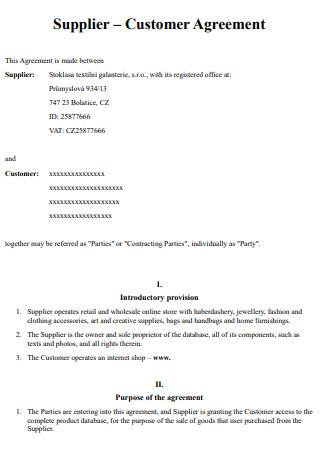
Supplier Customer Agreement
download now -
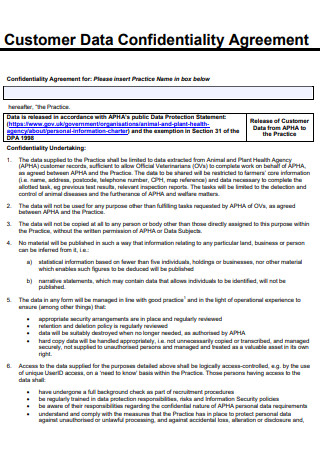
Customer Data Confidentiality Agrrement
download now -

Customer Master Service Agreement
download now -

End Customer Agreement
download now -

Customer Agreement
download now -

Residential Customer Agreement
download now -

General Customer Agreement
download now -
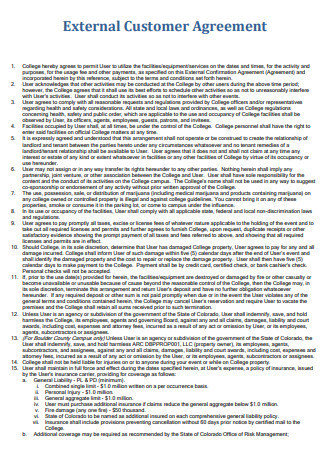
External Customer Agreement
download now -

Collateral Customer Agreement
download now -
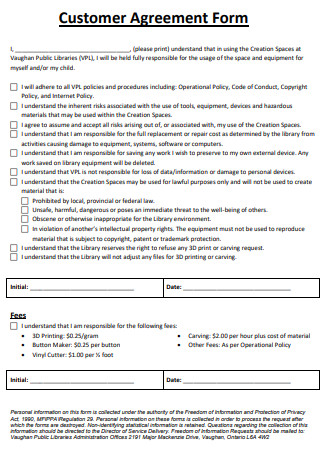
Customer Agreement Form
download now -
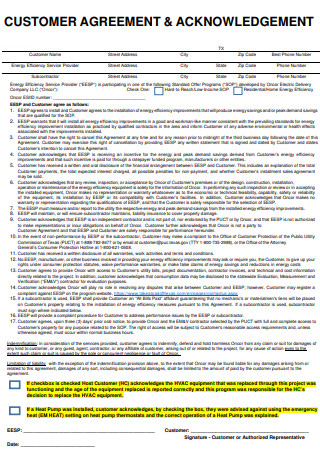
Customer Agreement and Acknowledgement
download now -
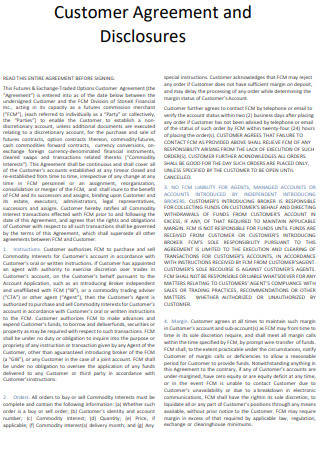
Customer Agreement and Disclosures
download now -
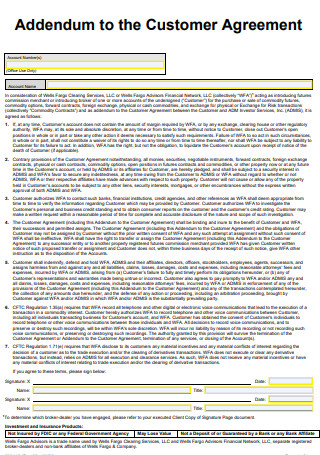
Addendum to the Customer Agreement
download now -

Enterprise Customer Agreement
download now -
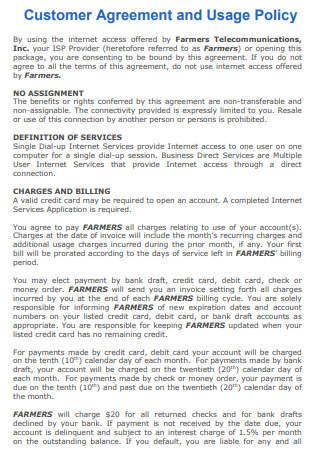
Customer Agreement and Usage Policy
download now -

Sponsored Customer Agreement
download now -
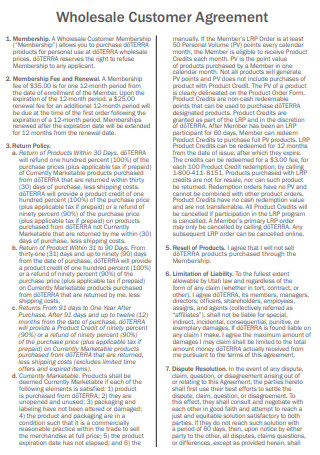
Wholesale Customer Agreement
download now
FREE Customer Agreement s to Download
16+ SAMPLE Customer Agreement
What Is a Customer Agreement?
Different Types of Customers
Benefits of Customer Satisfaction
Steps On How to Write a Customer Agreement
FAQS
What Are the Different Kinds of Customers?
How Important Is Customer Satisfaction?
Why Is a Customer Agreement Necessary?
What Is a Customer Agreement?
A customer agreement is a written agreement between a business, firm, or supplier and a customer. The acquisition of a service or commodity would be specified in the agreement. As well as the pricing and payment terms associated with them. A customer agreement must also specify the scope and terms agreed upon by the two parties. A client agreement would be required to legally bind both parties on agreed-upon terms. Essentially, it is a contract between a buyer and a seller. Some customer agreements are standardized and cannot be negotiated. However, it also protects the customer from any illicit selling conduct. It protects both parties in the event of a breach of the agreement.
According to scamwatch figures, there has already been a 10.6 percent increase in financial losses. This is based on reports from 11,000 or more people. Making sure the legality of any customer agreement that a person would sign is one technique to avoid falling victim to a scam. In addition to thoroughly reading its contents.
Different Types of Customers
As a salesperson, you must understand your target market. Your marketing plan may alter depending on the type of customer. It would be easier to secure their devotion by maintaining discipline in this manner. So, to help you understand how to deal with different types of consumers, here are some examples.
Benefits of Customer Satisfaction
Customer satisfaction is the most crucial part of most businesses. When there is an improvement in customer satisfaction, everything else follows. A satisfied customer is more likely to become a loyal customer. And this is even better news for the company. Customers that are loyal to a brand are excellent at promoting it on their platform. As a result, there is an increase in exposure and a slew of new potential clients. What are the other advantages of client satisfaction? Let’s find out more in the sections that follow.
Steps On How to Write a Customer Agreement
A customer agreement primarily governs the use of services or products. The contents vary greatly based on the services and products as well as the purpose. A customer, for example, may purchase a new mobile phone. They will subsequently be able to sign into a customer contract with a carrier. And there are clauses within that tie the customer to the agreement. Let’s have a look at them now, shall we?
-
Step 1. Contact Information
It is critical for both parties to include crucial contact information in the agreement. It must include the billing address, the primary address, the business name, and the name of the business owner. Contact information, such as an email address or phone number, is also included. This applies to both parties. This contact information should also be current and up to date. If the seller’s and customer’s legal business names are used for purchase, this includes both the seller’s and customer’s legal business names. However, if it is for personal reasons, use your own name and contact details. It is preferable for the seller to be aware if they are working with a business representative. Or towards the actual owner.
-
Step 2. Terms and Scope
When it comes to supplying services, the scope of how much will be provided is specified in the client agreement. Or specific terms that both parties, particularly the customer, should be aware of. What happens, for example, if the client does not like the service or wishes to extend it? What can and cannot be done should be clearly defined. Or if there are any further processes and steps to take. Also, how it can influence the overall payment. Any policy involving change or anything that requires the approval of both parties should have a clear statement. Most importantly, the duties of both parties in terms of who will bear the expense of producing an item.
-
Step 3. Payment Terms
Every transaction necessitates a payment term. As a result, there is always a settlement component to any customer agreement. It could be an installment, a deposit, or a discount. In addition to defining payment methods and identifying the billing address. If it is critical to know and determine the payment terms and the amount to be paid. If it’s a service, provide the rate and how it’ll be computed. A payment plan or when the billing invoice will be mailed should also be defined. There should be a cut-off period for recurring payments such as subscriptions.
-
Step 4. Additional Clause
There are specific clauses for termination reasons. And how any compensation or reconciliation will be carried out. There are also terms such as termination fees or any fees spent by the customer. Clauses that safeguard the client should also be included. For example, anything related to unsatisfactory service or defective items. There should be a warranty clause as well as clauses regarding ownership rights.
FAQS
What Are the Different Kinds of Customers?
Potential customers, new customers, impulse customers, and, most importantly, loyal customers are the various types of customers. It is preferable for a salesperson to gain a loyal customer by providing exceptional customer service.
How Important Is Customer Satisfaction?
The more satisfied a customer is with a product or their customer service experience, the more likely they are to become loyal. And if they were a dedicated customer, they would keep going back for it. Unsatisfactory customer service may lead to a customer switching to a competitor. As a result, it is critical that they have great degree of consumer satisfaction.
Why Is a Customer Agreement Necessary?
A customer agreement protects both parties in the event of a violation of agreement. It also protects the buyer from any unlawful acts by the merchant. An agreement also contains a lot of information, such as warranties or payment terms, that a consumer should be aware of.
Customers’ wants are always priority, even if they are not always realistic. Even when a customer nda is requested. A customer agreement, on the other hand, might reassure and urge them to buy. When there is a legally enforceable document, it is simpler to feel safer and more secure. Using a customer agreement template would be even more reassuring!
